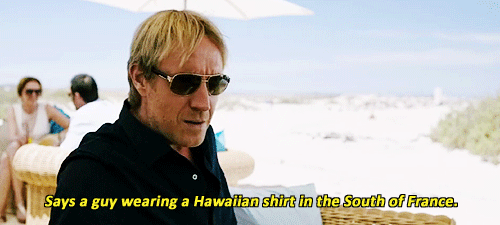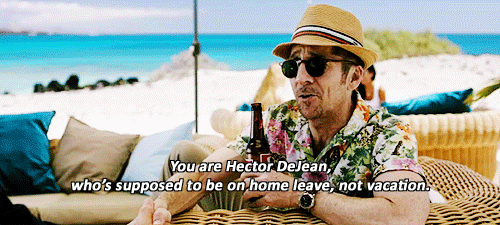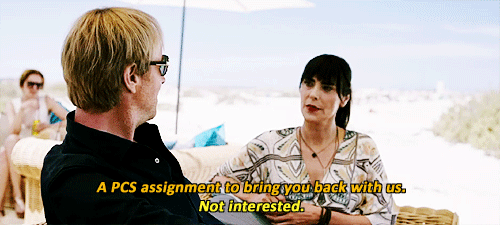#michelle kirsch
Photo

(via GIPHY)
#giphy#good morning#hugs#morning coffee#happy morning#good morning my love#good morning love#morning tea#michelle kirsch#morning love#hug in a mug#good morning hearts#good morning love you#morning hugs
27 notes
·
View notes
Photo

(via GIPHY)
#giphy#good morning#hugs#morning coffee#happy morning#good morning my love#good morning love#morning tea#michelle kirsch#morning love#hug in a mug#good morning hearts#good morning love you#morning hugs
4 notes
·
View notes
Text

All seasons of Berlin Station are now available on MGM+.
#richard armitage#daniel miller#rhys ifans#hector dejean#michelle forbes#valerie edwards#mina tander#esther krug#leland orser#robert kirsch#richard jenkins#steven frost#ashley judd#bb yates#keke palmer#april lewis#ismael cruz cordova#rafael torres#tamlyn tomita#sandra abe#caroline goodall#kelly frost#berlin station#berlin station season 1#berlin station season 2#berlin station season 3#epix#mgm+#news
25 notes
·
View notes
Text
Science and the unconscious
In the preceding chapters C. G. Jung and some of his associates have tried to make clear the role played by the symbol-creating function in man’s unconscious psyche and to point out some fields of application in this newly discovered area of life. We are still far from understanding the unconscious or the archetypes — those dynamic nuclei of the psyche — in all their implications. All we can see now is that the archetypes have an enormous impact on the individual, forming his emotions and his ethical and mental outlook, influencing his relationships with others, and thus affecting his whole destiny. We can also see that the arrangement of archetypal symbols follows a pattern of wholeness in the individual, and that an appropriate understanding of the symbols can have a healing effect. And we can see that the archetypes can act as creative or destructive forces in our mind: creative when they inspire new ideas, destructive when these same ideas stiffen into conscious prejudices that inhibit further discoveries.
Jung has shown in his chapter how subtle and differentiated all attempts at interpretation must be, in order not to weaken the specific individual and cultural values of archetypal ideas and symbols by leveling them out- - i.e. by giving them a stereotyped, intellectually formulated meaning. Jung himself dedicated his entire life to such investigations and interpretative work; naturally this book sketches only an infinitesimal part of his vast contribution to this new field of psychological discovery. He was a pioneer and remained fully aware that an enormous number of further questions remained unanswered and call for further investigation. This is why his concepts and hypotheses are conceived on as wide a basis as possible (without making them too vague and all-embracing) and why his views form a so-called “open system” that does not close the door against possible new discoveries.
To Jung, his concepts were mere tools or heuristic hypotheses that might help us to explore the vast new area of reality opened up by the discovery of the unconscious— a discovery that has not merely widened our whole view of the world but has in fact doubled it. We must always ask now whether a mental phenomenon is conscious or unconscious and, also, whether a “real” outer phenomenon is perceived by conscious or unconscious means.
The powerful forces of the unconscious most certainly appear not only in clinical material but also in the mythological, religious, artistic, and all the other cultural activities by which man expresses himself. Obviously, if all men have common inherited patterns of emotional and mental behavior (which Jung called the archetypes), it is only to be expected that we shall find their products (symbolic fantasies, thoughts, and actions) in practically every field of human activity.
Important modern investigations of many of these fields have been deeply influenced by Jung’s work. For instance, this influence can be seen in the study of literature, in such books as J. B. Priestley’s Literature and Western Man, Gottfried Diener’s Fausts Weg zu Helena, or James Kirsch’s Shakespeare’s Hamlet. Similarly, Jungian psychology has contributed to the study of art, as in the writings of Herbert Read or of Aniela Jaffe, Erich Neumann’s examination of Henry Moore, or Michael Tippett’s studies in music. Arnold Toynbee’s work on history and Paul Radin’s on anthropology have benefited from Jung’s teachings, as have the contributions to sinology made by Richard Wilhelm, Enwin Rousselle, and Manfred Porkert.
Of course, this does not mean that the special features of art and literature (including their interpretations) can be understood only from their archetypal foundation. These fields all have their own laws of activity; like all really creative achievements, they cannot ultimately be rationally explained. But within their areas of action one can recognize the archetypal patterns as a dynamic background activity. And one can often decipher in them (as in dreams) the message of some seemingly purposive, evolutionary tendency of the unconscious.
The fruitfulness of Jung’s ideas is more immediately understandable within the area of the cultural activities of man: Obviously, if the archetypes determine our mental behavior, they must appear in all these fields. But, unexpectedly, Jung’s concepts have also opened up new ways of looking at things in the realm of the natural sciences as well—for instance, in biology.
The physicist Wolfgang Pauli has pointed out that, due to new discoveries, our idea of the evolution of life requires a revision that might take into account an area of interrelation between the unconscious psyche and biological processes. Until recently it was assumed that the mutation of species happened at random and that a selection took place by means of which the “meaningful,” well-adapted varieties survived, and the others disappeared. But modern evolutionists have pointed out that the selections of such mutations by pure chance would have taken much longer than the known age of our planet allows.
Jung’s concept of synchronicity may be helpful here, for it could throw light upon the occurrence of certain rare “border-phenomena,” or exceptional events; thus it might explain how “meaningful” adaptations and mutations could happen in less time than that required by entirely random mutations. Today we know of many instances in which meaningful “chance” events have occurred when an archetype is activated. For example, the history of science contains many cases of simultaneous invention or discovery. One of the most famous of such cases involved Darwin and his theory of the origin of species: Darwin had developed the theory in a lengthy essay, and in 1844 was busy expanding this into a major treatise.
While he was at work on this project he received a manuscript from a young biologist, unknown to Darwin, named A. R. Wallace. The manuscript was a shorter but otherwise parallel exposition of Darwin’s theory. At the time Wallace was in the Molucca Islands of the Malay Archipelago. He knew of Darwin as a naturalist, but had not the slightest idea of the kind of theoretical work on which Darwin was at the time engaged.
In each case a creative scientist had independently arrived at a hypothesis that was to change the entire development of the science. And each had initially conceived of the hypothesis in an intuitive “flash” (later backed up by documentary evidence). The archetypes thus seem to appear as the agents, so to speak, of a creatio continua. (What Jung calls synchronistic events are in fact something like “acts of creation in time.”)
Similar “meaningful coincidences” can be said to occur when there is a vital necessity for an individual to know about, say, a relative’s death, or some lost possession. In a great many cases such information has been revealed by means of extrasensory perception. This seems to suggest that abnormal random phenomena may occur when a vital need or urge is aroused; and this in turn might explain why a species of animals, under great pressure or in great need, could produce “meaningful” (but acausal) changes in its outer material structure.
But the most promising field for future studies seems (as Jung saw it) to have unexpectedly opened up in connection with the complex field of microphysics. At first sight, it seems most unlikely that we should find a relationship between psychology and microphysics. The interrelation of these sciences is worth some explanation.
The most obvious aspect of such a connection lies in the fact that most of the basic concepts of physics (such as space, time, matter, energy, continuum or field, particle, etc.) were originally intuitive, semi-mythological, archetypal ideas of the old Greek philosophers — ideas that then slowly evolved and became more accurate and that today are mainly expressed in abstract mathematical terms. The idea of a particle, for instance, was formulated by the fourth-century B.C. Greek philosopher Leucippus and his pupil Democritus, who called it the “atom” i.e. the “indivisible unit.” Though the atom has not proved indivisible, we still conceive matter ultimately as consisting of waves and particles (or discontinuous “quanta”).
The idea of energy, and its relationship to force and movement, was also formulated by early Greek thinkers, and was developed by Stoic philosophers. They postulated the existence of a sort of life-giving “tension” (tonos), which supports and moves all things. This is obviously a semi-mythological germ of our modern concept of energy.
Even comparatively modern scientists and thinkers have relied on half-mythological, archetypal images when building up new concepts. In the 17th century, for instance, the absolute validity of the law of causality seemed “proved” to Rene Descartes “by the fact that God is immutable in His decisions and actions.” And the great German astronomer Johannes Kepler asserted that there are not more and not less than three dimensions of space on account of the Trinity.
These are just two examples among many that show how even our modern and basic scientific concepts remained for a long time linked with archetypal ideas that originally came from the unconscious. They do not necessarily express “objective” facts (or at least we cannot prove that they ultimately do) but spring from innate mental tendencies in man — tendencies that induce him to find “satisfactory” rational explanatory connections between the various outer and inner facts with which he has to deal. When examining nature and the universe, instead of looking for and finding objective qualities, “man encounters himself,” in the phrase of the physicist Werner Heisenberg.
Because of the implications of this point of view, Wolfgang Pauli and other scientists have begun to study the role of archetypal symbolism in the realm of scientific concepts. Pauli believed that we should parallel our investigation of outer objects with a psychological investigation of the inner origin of our scientific concepts. (This investigation might shed new light on a far-reaching concept to be introduced later in this chapter - the concept of a “one-ness” between the physical and psychological spheres, quantitative and qualitative aspects of reality).
Besides this rather obvious link between the psychology of the unconscious and physics, there, are other even more fascinating connections. Jung (working closely with Pauli) discovered that analytical psychology has been forced by investigations in its own field to create concepts that turned out later to be strikingly similar to those created by the physicists when confronted with microphysical phenomena. One of the most important among the physicists’ concepts is Niels Bohr’s idea of complementarity.
Modern microphysics has discovered that one can describe light only by means of two logically opposed but complementary concepts: The ideas of particle and wave. In grossly simplified terms, it might be said that under certain experimental conditions light manifests itself as if it were composed of particles; under others, as if it were a wave. Also, it was discovered that we can accurately observe either the position or the velocity of a subatomic particle - but not both at once. The observer must choose his experimental set-up, but by doing so he excludes (or rather must “sacrifice”) some other possible setup and its results. Furthermore, the measuring apparatus has to be included in the description of events because it has a decisive but uncontrollable influence upon the experimental set-up.
Pauli says: “The science of microphysics, on account of the basic ‘complementary’ situation, is faced with the impossibility of eliminating the effects of the observer by determinable correctives and has therefore to abandon in principle any objective understanding of physical phenomena. Where classical physics still saw ‘determined causal natural laws of nature’ we now look only for ‘statistical laws’ with ‘primary possibilities’.”
In other words, in microphysics the observer interferes with the experiment in a way that cannot be measured and that therefore cannot be eliminated. No natural laws can be formulated, saying “such-and-such will happen in every case.” All the microphysicist can say is “such-and-such is, according to statistical probability, likely to happen.” This naturally represents a tremendous problem for our classical physical thinking. It requires a consideration, in a scientific experiment, of the mental outlook of the participant-observer: It could thus be said that scientists can no longer hope to describe any aspects of outer objects in a completely “objective” manner.
Most modern physicists have accepted the fact that the role played by the conscious ideas of an observer in every microphysical experiment cannot be eliminated; but they have not concerned themselves with the possibility that the total psychological condition (both conscious and unconscious) of the observer might play a role as well. As Pauli points out, however, we have at least no a priori reasons for rejecting this possibility. But we must look at this as a still unanswered and an unexplored problem.
Bohr’s idea of complementarity is especially interesting to jungian psychologists, for Jung saw that the relationship between the conscious and unconscious mind also forms a complementary pair of opposites. Each new content that comes up from the unconscious is altered in its basic nature by being partly integrated into the conscious mind of the observer. Even dream contents (if noticed at all are in that way semi-conscious. And each enlargement of the observer’s consciousness caused by dream interpretation has again an immeasurable repercussion and influence on the unconscious. Thus the unconscious can only be approximately described (like the particles of microphysics) by paradoxical concepts. What it really is “in itself” we shall never know, just as we shall never know this about matter.
To take the parallels between psychology and microphysics even further: What Jung calls the archetypes (or patterns of emotional and mental behavior in man) could just as well be called, to use Pauli’s term, “primary possibilities” of psychic reactions. As has been stressed in this book, there are no laws governing the specific form in which an archetype might appear. There are only “tendencies” (see p. 67) that, again, enable us to say only that such-and-such is likely to happen in certain psychological situations.
As the American psychologist William James once pointed out, the idea of an unconscious could itself be compared to the “field” concept in physics. We might say that, just as in a magnetic field the particles entering into it appear in a certain order, psychological contents also appear in an ordered way within that psychic area which we call the unconscious. If we call something “rational” or “meaningful” in our conscious mind, and accept it as a satisfactory “explanation” of things, it is probably due to the fact that our conscious explanation is in harmony with some preconscious constellation of contents in our unconscious.
In other words, our conscious representations are sometimes ordered (or arranged in a pattern) before they have become conscious to us. The 19th-century German mathematician Karl Friedrich Gauss gives an example of an experience of such an unconscious order of ideas: He says that he found a certain rule in the theory of numbers “not by painstaking research, but by the Grace of God, so to speak. The riddle solved itself as lightning strikes, and I myself could not tell or show the connection between what I knew before, what I last used to experiment with, and what produced the final success.” The French scientist Henri Poincare is even more explicit about this phenomenon; he describes how during a sleepless night he actually watched his mathematical representations colliding in him until some of them “found a more stable connection. One feels as if one could watch one’s own unconscious at work, the unconscious activity partially becoming manifest to consciousness without losing its own character. At such moments one has an intuition of the difference between the mechanisms of the two egos.”
As a final example of parallel developments in microphysics and. psychology, we can consider Jung’s concept of meaning. Where before men looked for causal (i.e. rational) explanations of phenomena, Jung introduced the idea of looking for the meaning (or, perhaps we could say, the “purpose”). That is, rather than ask why something happened (i.e. what caused it), Jung asked: What did it happen for? This same tendency appears in physics: Many modern physicists are now looking more for “connections” in nature than for causal laws (determinism).
Pauli expected that the idea of the unconscious would spread beyond the “narrow frame of therapeutic use” and would influence all natural sciences that deal with general life phenomena. Since Pauli suggested this development he has been echoed by some physicists who are concerned with the new science of cybernetics— the comparative study of the “control” system formed by the brain and nervous system and such mechanical or electronic information and control systems as computers. In short, as the modern French scientist Oliver Costa de Beauregard has put it, science and psychology should in future “enter into an active dialogue.”
The unexpected parallelisms of ideas in psychology and physics suggest, as Jung pointed out, a possible ultimate one-ness of both fields of reality that physics and psychology study—i.e. a psychophysical one-ness of all life phenomena. Jung was even convinced that what he calls the unconscious somehow links up with the structure of inorganic matter—a link to which the problem of so-called “psychosomatic” illness seems to point. The concept of a Unitarian idea of reality (which has been followed up by Pauli and Erich Neumann) was called by Jung the unus mundus (the one world, within which matter and psyche arc not yet discriminated or separately actualized). He paved the way toward such a Unitarian point of view by pointing out that an archetype shows a “psychoid” (i.e. not purely psychic but almost material) aspect when it appears within a synchronistic event — for such an event is in effect a meaningful arrangement of inner psychic, and outer facts.
In other words, the archetypes not only fit into outer situations (as animal patterns of behavior fit into their surrounding nature); at bottom they tend to become manifest in a synchronistic “arrangement” that includes both matter and psyche. But these statements are just hints at some directions in which the investigation of life phenomena might proceed. Jung felt that we should first learn a great deal more about the interrelation of these two areas (matter and psyche) before rushing into too many abstract speculations about it.
The field that Jung himself felt would be most fruitful for further investigations was the study of our basic mathematical axiomata—which Pauli calls “primary mathematical intuitions,” and among which he especially mentions the ideas of an infinite series of numbers in arithmetic, or of a continuum in geometry, etc. As the German-born author Hannah Arendt has said, “with the rise of modernity, mathematics do not simply enlarge their content or reach out into the infinite to become applicable to the immensity of an infinite and infinitely growing, expanding universe, but cease to be concerned with appearance at all. They are no longer the beginnings of philosophy, or the ‘science’ of Being in its true appearance, but become instead the science of the structure of the human mind.” (A Jungian would at once add the question: Which mind? The conscious or the unconscious mind?)
As we have seen with reference to the experiences of Gauss arid Poincare, the mathematicians also discovered the fact that our representations are “ordered” before we become aware of them. B. L. van der Waerden, who cites many examples of essential mathematical insights arising from the unconscious, concludes: “...the unconscious is not only able to associate and combine, but even to judge. The judgment of the unconscious is an intuitive one, but it is under favorable circumstances completely sure.”
Among the many mathematical primary intuitions, or a priori ideas, the “natural numbers” seem psychologically the most interesting. Not only do they serve our conscious everyday measuring and counting operations; they have for centuries been the only existing means for “reading” the meaning of such ancient forms of divination as astrology, numerology, geomancy, etc.—all of which are based on arithmetical computation and all of which have been investigated by Jung in terms of his theory of synchronicity. Furthermore, the natural numbers — viewed from a psychological angle — must certainly be archetypal representations, for we are forced to think about them in certain definite ways. Nobody, for instance, can deny that 2 is the only existing even primary number, even if he has never thought about it consciously before. In other words, numbers are not concepts consciously invented by men for purposes of calculation: They are spontaneous and autonomous products of the unconscious — as are other archetypal symbols.
But the natural numbers are also qualities adherent to outer objects: We can assert and count that there are two stones here or three trees there. Even if we strip outer objects of all such qualities as color, temperature, size, etc., there still remains their “many-ness” or special multiplicity. Yet these same numbers are also just as indisputably parts of our own mental set-up — abstract concepts that we can study without looking at outer objects. Numbers thus appear to be a tangible connection between the spheres of matter and psyche. According to hints dropped by Jung, it is here that the most fruitful field of further investigation might be found.
I mention these rather difficult concepts briefly in order to show that, to me, Jung’s ideas do not form a “doctrine” but are the beginning of a new outlook that will continue to evolve and expand. I hope they will give the reader a glimpse into what seems to me to have been essential to and typical of Jung’s scientific attitude. He was always searching, with unusual freedom from conventional prejudices, and at the same time with great modesty and accuracy, to understand the phenomenon of life. He did not go further into the ideas mentioned above, because he felt that he had not yet enough facts in hand to say anything relevant about them—just as he generally waited several years before publishing his new insights, checking them again and again in the meantime, and himself raising every possible doubt about them.
Therefore, what might at first sight strike the reader as a certain vagueness in his ideas comes in fact from this scientific attitude of intellectual modesty -an attitude that does not exclude (by rash, superficial pseudo-explanations and oversimplifications) new possible discoveries, and that respects the complexity of the phenomenon of life. For this phenomenon was always an exciting mystery to Jung. It was never, as it is for people with closed minds, an “explained” reality about which it can be assumed that we know everything.
Creative ideas, in my opinion, show their value in that, like keys, they help to “unlock” hitherto unintelligible connections of facts and thus enable man to penetrate deeper into the mystery of life. I am convinced that Jung’s ideas can serve in this way to find and interpret new facts in many fields of science (and also of everyday life), simultaneously leading the individual to a more balanced, more ethical, and wider conscious outlook. If the reader should feel stimulated to work further on the investigation and assimilation of the unconscious— which always begins by working on oneself — the purpose of this introductory book would be fulfilled.
--Marie-Louise Von Franz en "Man and his Symbols"

#Carl Jung#man and his symbols#marie louise von franz#unconscious#J.B. Priestley#Gottfried Diener#Literature and Western Man#Faust Weg zu Helena#James Kirsch#Shakespeare's Hamlet#Michel Tippett#Arnold Toynbee#Paul Radin#Richard Wilhelm#Enwin Rousselle#Manfred Porkert#Wolfgang Pauli#Charles Darwin#A.R. Wallace#Leucippus#Democritus#Rene Descartes#Johannes Kepler#Werner Heisenberg#Niels Bohr#William James#Karl Friedrich Gauss#Henri Poincare#Oliver Costa de Beauregard#Erich Neumann
0 notes
Text
Alrightyyy here we go...
Scream 2(1997) and Scream 6 (2023) parallels
Now first and foremost, obviously there is the parent revenge connection. As you can see in scream 2 (1997) Nancy Loomis tries to avenge Billy from (1996) who was a ghostface. And Wayne Bailey in scream 6 (2023) along with his other children Quinn and Ethan try to avenge Richie Kirsch (2022) who was also a ghostface. Both parents of a ghostface who became ghostfaces themselves.
Then there's Tara punching Gale. Like Sidney did in (1996) and (1997). It's even acknowledged in Scream 6 when Sam swings on Gale and Gale dodges "Nice try sweetie, but I've done this dance before" only for Tara to hit her instead.
There's the final-girl love interest is a suspect but not a killer. Danny Brackett in 6 and Derek Feldman in 2. Only Derek dies whereas Danny lives through Scream 6 and wasn't personally present in the theater for act three.
Speaking of theaters...Sidney majored in theater in Scream 2, so she was shown as the lead actress in a play. Following the theater theme, the confrontation with Ghostface took place in the school’s auditorium. There, Sidney and Gale and eventually Cotton Weary killed Nancy Loomis and Mickey Altieri. Scream 6’s final showdown also took place in a theater, an abandoned one in which Wayne and his children had set a Ghostface shrine with objects belonging to past victims, killers, and lots of Stab memorabilia as a way to “honour” Richie. So both of the act threes took place in a theater.
At the frat party in 6 Tara mentions possibly rushing Omega Beta Zeta. Which drumroll please... is the same sorority Sarah Michelle Gellar's character in Scream 2, Cici Cooper was in. Cici was killed in the Omega Beta Zeta sorority house, remember?
During Mickey's act three monologue just after Nancy Loomis is revealed as the second ghostface, Mickey says "didn't see it coming, did ya??" ANDDD in the killer monologue in Scream 6 when Quinn and Ethan are revealed alongside Wayne, Quinn says "heyy roomies. You didn't see that one coming, did you?" This one was kinda insignificant but I noticed it right away.
Then there's the final-girls incorrectly guessing the identity of a ghostface right before the reveal and guessing a previous ghostface survivor. In Scream 2 Mickey tells Sidney there's a surprise for her only for Gale to walk into the room. Sidney briefly believes it's Gale, until Nancy walks in behind her, holding Gale at gunpoint. Then in Scream 6 after Wayne and Ethan were revealed and Quinn is about to remove her mask, Sam guesses Mindy, exacerbated.
Sooo yeah. There's probably more, but these were the really obvious ones to me.
:)
25 notes
·
View notes
Text
Reading This Week 2024 #5
orange means actually read, blue means skimmed. i am so deeply in the grad school reading hole it is So/Too Much and i have to read and grade student papers this coming week...
Finished:
The Book of Disappearance by Ibtisam Azem, translated by Sinan Antoon
said my thoughts on this last week! i will add that unfortunately at times the translation is sloppy/there were many typos.. i still really liked the book
Ouran High School Host Club, Vol. 6 by Bisco Hatori, translated by Naomi Kokubo & Eric-Jon Rössel Waugh
just a fun read. debating if i should just read whatever next volume is available through my library, even tho its not the next one
Orange, Vol. 3 by Ichigo Takano, translated by Amber Tamosaitis
held my breath and got through the moment that i stopped reading on a few weeks prior and got past it! the story remains cute!
Started and Finished:
"Gender, Race and the Regulation of Native Identity in Canada: An Overview" by Bonita Lawrence
Giving an Account of Oneself by Judith Butler
"What is an Author?" by Michel Foucault
Introduction & Afterword from Critical Discourses by David Sancher
"Hansel and Gretel" and "The Juniper Tree" from Grimm's Fairy Tales
"Morphology of Folktales" by Vladimir Propp
"Theory as Liberatory Practice" by bell hooks
"The Attempted Dispossession of Kwe" Chapter 3 of As We Have Always Done: Indigenous Freedom through Radical Resistance by Leanne Betasamosake Simpson
"The Man of Professional Wisdom" by Kathryn Pyne Addelson
"Whose Words? Whose Reality?: THe Politics of Representation and Interpretation" Chapter 3 of Ethical Dilemmas in Feminist Research: The Politics of Location, Interpretation, and Publication by Gesa E. Kirsch
"Trapped in the Wrong Theory: Rethinking Trans Oppression and Resistance" by Talia Mae Bettcher
^^ really liked this one
The Hungry Tide by Amitav Ghosh
what a page turner! and thank god it was bc it was 333 pages and i had to get through it all last week... wish me luck with the 360 pages book i have to read this week
I Think Our Son Is Gay, Vol. 4 by Okura, translated by Leighann Harvey
continue to find this very cute, and every time i read this series it reminds me of the wild feeling of my dad gifting me the first volume (being out to my parents has weird side effects like this)
"Postcolonial Studies and the Challenge of Climate Change" by Dipesh Chakrabarty
Selections from an Unfinished Book, "3,000 Years Among the Microbes" by Mark Twain, from Appendix V of Mark Twain: A Biography by Albert Bigelow Paine
^^WILD. human man shrunk down to microscopic scale talking about microbe society and philosphy
S.T. Coleridge on Fancy vs. Imagination
so many student paper proposals...
Ongoing:
Gulliver's Travels by Jonathan Swift, specifically read the first 5 pages of part 2
Legends & Lattes by Travis Baldree
read another chapter of this to the gf! every so often i interrupted myself to complain about weird word choices. seriously... "armed" used as a verb to mean "wipe sweat of one's forehead with their arm"???? bad
3 notes
·
View notes
Video
vimeo
Microsoft Edge - Browse smarter with AI from Not Real on Vimeo.
Credits
Directed by NotReal
Creative Direction: Milton Gonzalez
Executive Production: Roberto Connolly
Creative Project Manager: Martin Orza, Mercedes Ginzo
Animation Direction: Macarena Mosquera
Storyboard Artists: Martin Orza, Nahuel Rollan
3D Design: Friedrich Neumann, Joan García Pons, Florencia Tasso, Juan Cioffi, Gonzalo Diaz, Romain Braccini
2D Design: Flor Piove, Federico Sanchez, Nico Martinetti, Naida Mazzenga, Carolina Ghisolfi, Martin Orza, Mercedes Ginzo
3D Animation: Macarena Mosquera, Nico Piccirilli, Pato Molina, Juan Pablo Sciaccaluga
2D Animation: Martín Muerza, Pablo Lozano, Pato Molina, Macarena Mosquera
Rendering: Macarena Mosquera, Juan Cioffi
Compositing & Color Grading: Mauricio Navas, Matías Mastrogiano, Milton Gonzalez
Sound Design: Fabrizio Martini
Client: Microsoft
Samuel R. Clarke - Director, Group Creative Lead
Michelle K. Lin - Sr. Art Director
Joshua Kirsch - Art Director
Shelagh Walsh - Copywriter
Maria Andreotti Lambertini - Producer
Year: 2023
0 notes
Text
☆.. ノ movies
☆.. ノ addams family
★ pugsley addams
☆.. ノ alexander and the terrible no-good horrible very bad day
★ emily cooper
☆.. ノ cheaper by the dozen
★ mark baker
★ sarah baker
☆.. ノ DC
★ harley quinn
☆.. ノ descendants
★ carlos de vil
★ mal
☆.. ノ divergent
★ caleb prior
★ christina
☆.. ノ encanto
★ camilo madrigal
★ isabela madrigal
★ luisa madrigal
☆.. ノ escape room
★ amanda harper
★ ben miller
★ brianna collier
☆.. ノ family camp
★ henry ackerman
☆.. ノ FNAF movie
★ mike schmidt
☆.. ノ friday the 13th
★ chris higgins
★ ginny field
★ marcie cunningham
★ vera sanchez
☆.. ノ girl, interrupted
★ daisy randone
★ lisa rowe
★ susanna kaysen
☆.. ノ halloween
★ allyson nelson
★ vickie
☆.. ノ honor society
★ honor
★ travis
☆.. ノ hotel transylvania
★ mavis dracula
☆.. ノ how to train your dragon
★ hiccup haddock
★ ruffnut thorston
☆.. ノ indiana jones
★ teddy kumar
☆.. ノ it
★ beverly marsh
★ bill denbrough
★ eddie kaspbrak
☆.. ノ jungle cruise
★ macgregor houghton
☆.. ノ legally blonde
★ elle woods
☆.. ノ lemonade mouth
★ charlie delgado
☆.. ノ marvel
★ bucky barnes
★ loki laufeyson
★ mantis
★ may parker
★ michelle-jones watson
★ nebula
★ peter parker (andrew garfield)
★ river lang (OC)
★ winter soldier
☆.. ノ mean girls
★ gretchen wieners
★ karen smith
☆.. ノ my girl
★ vada sultenfuss
☆.. ノ my spy
★ bobbi
☆.. ノ night at the museum
★ jedediah smith
☆.. ノ ouija: origins of evil
★ lina zander
☆.. ノ pitch perfect
★ beca mitchell
★ cynthia-rose adams
★ pieter kramer
☆.. ノ remember the titans
★ ronnie bass “sunshine”
☆.. ノ saint vincent
★ oliver
☆.. ノ saw
★ adam faulkner-stanheight
★ addison corday
★ allison kerry
★ amanda young
★ anna
★ brit stevenson
★ eleanor bonneville
★ joyce dagen
★ mark hoffman
★ pamela jenkins
★ peter strahm
★ ryan (saw 3d)
★ shelby
★ simone
★ valentina
☆.. ノ scream
★ amber freeman
★ angelina tyler
★ casey becker
★ ethan kirsch
★ gale weathers x3
★ jennifer jolie
★ jill roberts
★ kirby reed
★ mindi meeks-martin
★ robbie mercer
★ sam carpenter
★ sidney prescott
★ tatum riley
★ wes hicks
☆.. ノ sinister
★ trevor oswalt
☆.. ノ strange world
★ ethan clade
☆.. ノ the black phone
★ billy showalter “paperboy”
★ finney blake
★ griffin stagg
★ vance hopper “harbor / pin”
☆.. ノ the breakfast club
★ allison reynolds “eden”
★ john bender
☆.. ノ the goonies
★ mikey walsh
★ stef steinbrenner “maxx”
☆.. ノ the incredibles
★ dash parr
☆.. ノ the lodge
★ aiden hall
☆.. ノ the lost boys
★ sam emerson
☆.. ノ the mighty ducks
★ gordon bombay
☆.. ノ the notebook
★ allie hamilton
☆.. ノ the pacifier
★ lulu plummer
☆.. ノ the ring
★ becca kolter
★ rachel keller
☆.. ノ turning red
★ priya mangal
☆.. ノ uptown girls
★ ray schleine
☆.. ノ uncle buck
★ tia russel
☆.. ノ words on bathroom walls
★ rebecca
☆.. ノ twilight
★ alice cullen
★ bella swan (we have 2 bellas)
★ seth clearwater
0 notes
Text
Woche 48
Montag:
Morgens hat uns Alex sehr traurige Neuigkeiten erhält. Am Samstag war er eine Bergbesteigung auf den Antisana angegangen, der wohl etwas schwieriger und gefährlicher ist, da er viel Schnee und viele Gletscherspalten hat. Die Wege sind teilweise nur sehr dünn. Auf der Wanderung war auch ein zehnjähriges Mädchen dabei, die das Ziel hat die jüngste Person auf vielen Ecuadors Vulkanen und Bergen zu sein. Leider stimmt das mit den Gletscherspalten. Die zehnjährige und zwei weitere sind voran gegangen und der Weg ist weggebrochen, sodass die drei in einer 20 Meter tiefe Spalte fielen und es trauriger weise nicht überlebten. Der Rest der Gruppe musste umkehren und hat die schlimmen Nachrichten erst unten erhalten. Es war sehr traurig.
Dann musste es aber trotz allem zur Arbeit. Dort habe ich mit den leinen ein Bild gemalt. Sie sollte ihre Handabdrücke auf ein Papier machen und dann daraus Blumen. Es war sehr schön.

Nach der Arbeit ging es zurück nach Otavalo, wo ich Kekse für die Gastfamilie gebacken habe. Einigen ging es nicht gut, weswegen ich dann größtenteils allein gekocht habe. Alex hat aber auch ein bisschen geholfen und zum Beispiel Guacamole gemacht. Ich habe nämlich Yucca gekocht. Dazu gab es auch noch grüne Bohnen und Salat. Selina ging es dann nur leider gar nicht mehr gut und somit ist sie schon ins Bett. Die anderen schienen sich alle sehr fertig. Wir haben gegessen und ich hatte noch einen Apfel und Kirsch Crumble gemacht, den wir als Nachtisch hatten, aber viele noch nicht wollten, weil es ihnen schlecht ging. Außerdem hatte ich vorher noch eine Pfeffermühle gekauft und dies war das Adventskalendergeschenk.
Marvin, Anna und ich haben dann noch einen Teil der Taylor Swift Reputation Stadium Tour geschaut, bevor es ins Bett ging.
Dienstag:
Um den Kindern auch etwas mehr über andere Kulturen beizubringen, habe ich sie Davidstern Karten basteln lassen, und etwas über Hanukkah erzählt. Sogar die Lehrerinnen haben mich gefragt, was Hanukkah ist, was ich krass fand, dass sie das nicht kennen. Den Kindern schien das Projekt gefallen zu haben.
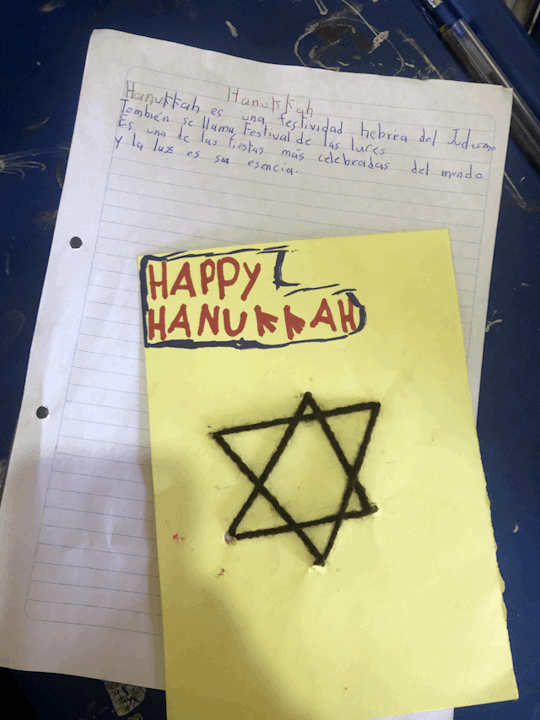
Dann ging es zur Gastfamilie mit meinem riesigen und schweren Rucksack, denn ich hatte viel mitgebracht. Zum Teil zwei Laptops. Ich habe dann direkt angefangen den einen Laptop anzuschalten, als auch Gladys nachhause kam. Ich hatte mich schon gewundert wo Hueso, der Hund steckt. Said erzählte mir, dass er leider wahrscheinlich gestorben ist. Er hatte die letzte Woche wohl aufgehört zu Essen und ist dann weggelaufen. Es war sehr traurig zu erfahren. Ich hatte Gladys dann auch von den Personen bei Alex´ Wanderung erzählt und sie, dass wohl ihre Großtante gestorben ist. So viel Tot, es war sehr traurig.
Wir haben Mittag gegessen, und als Michelle kam, haben wir ihn zusammen eingerichtet. Später kam dann auch noch die Nachbarin, für die der zweite Laptop war und so haben wir auch diesen eingerichtet. Das hat alles ziemlich lange gedauert, aber es hat geklappt.
Nach dem Abendessen ging es dann auch schon ins Bett.
Mittwoch
Kapak Raymi
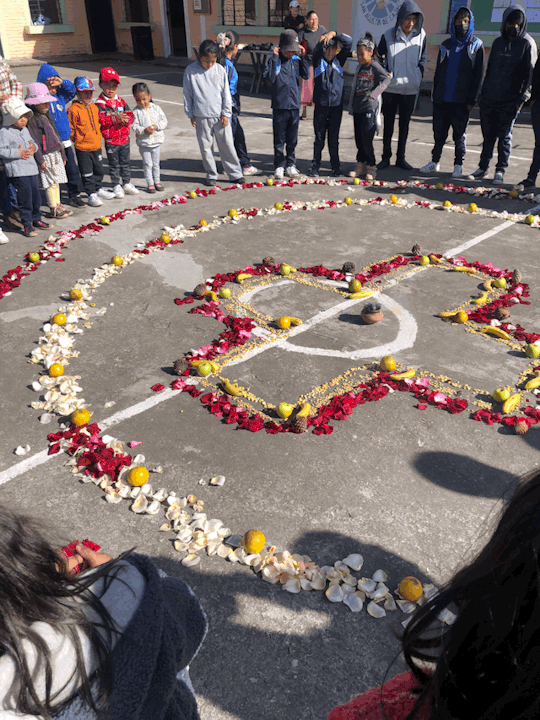

Sozusagen das Weihnachten der indigenen ist ein Fest der Ernte, wenn ich es richtig verstanden habe, da die Zeit der Mais Ernte beginnt. Es wurde wieder ein Blütenkreis mit Samen und Obst auf den Boden gelegt und ein Tisch aufgestellt, auf dem ganz viel Essen stand, was mitgebracht wurde. Nach ein paar Worten und einem Gebet wurde dann das Essen verteilt. Ich war allerdings ziemlich müde und wollte nichts essen.
Etwas später war auch schon Pause und nach der Pause habe ich mit drei der SchülerInnen die Engel von vor zwei Wochen beendet, bevor sie zum Rest der Klasse gegangen sin. Diese haben dann mit der Englischlehrerin einen Tischschmuck mit Kerze aus Pinienzapfen gebastelt. Ich konnte nur bedingt helfen, aber das war ok.
Und dann ging es schon nachhause. Nach dem Mittagessen bin ich mit der Mama nach Otavalo gefahren, denn sie musste etwas bei der Bank machen und außerdem haben wir Bridgettes Projekt besucht. Es ging mir immer schlechter und ich hatte Bauchschmerzen, aber des war ok. Ich konnte auch noch meinen Handy Vertrag, wahrscheinlich zum letzten Mal, aufladen. Bridgettes Projekt war sehr interessant und cool. Der ganze Schmuck wird aus Samen von sechs Frauen hergestellt.
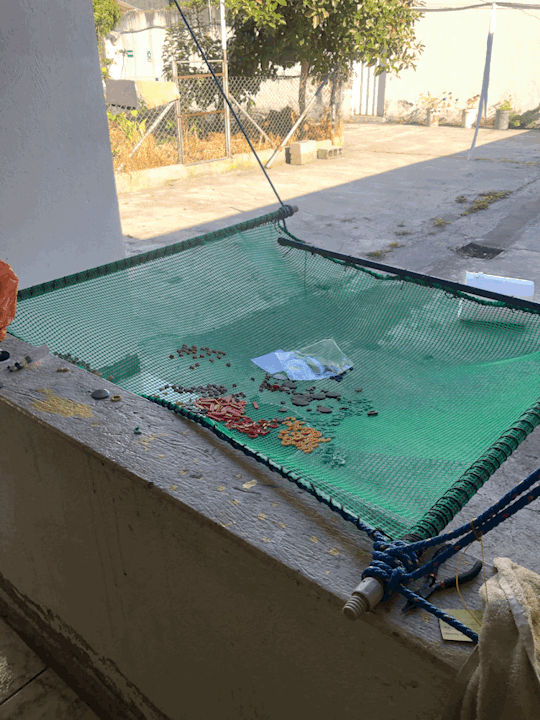

Bald ging es zurück nachhause, wo ich kurz eingeschlafen bin. Dann habe ich noch mit Said kurz gelesen, aber es gab schon Essen. Ich habe mich an den Tisch gesetzt, musste dann aber schnell raus zur Toilette, denn ich musste mich übergeben. Und dann wollte ich auch nichts mehr essen sondern einfach schnell ins Bett.
Donnerstag:
Morgens ging es mir nach viel Schlaf eigentlich wieder besser. Wir haben gefrühstückt und es ging zur Abriet, wo sie heute ein kleines Sportfest feiern würden.

Außerdem kam Noemi und hat neben den üblichen Lebensmitteln auch vier ganze Hühner vorbeigebracht. Die wurden dann direkt gekocht und ich bin mit in die Küche gegangen, es gab aber zu wenig Messer und so konnte ich nicht wirklich helfen. Nach der Pause haben sie dann mit ihren Spielen angefangen. Größtenteils Fußball. Und anschließend wurden die Gewinner ausgezeichnet. Diese haben einen Kuchen bekommen, die anderen Süßigkeiten und Cola.
Dann gab es, diesmal zu einer normalen Zeit, das Essen, bevor alle nachhause gingen. Zuhause haben wir uns dann fertig gemacht, um zu einer Beerdigung, wenn ich es richtig verstanden habe von der Großtante zu gehen. Der Friedhof war schön gelegen, denn man konnte sowohl den Imbabura, als auch den Cayambe sehen. Alle waren in den Trachten gekleidet und die Sonne schien. Außerdem war eine kleine Band da die gesungen hat. Es war aber trotzdem sehr traurig, alle Angehörigen haben sich bei offenem Sarg verabschiedet und geweint. Es war die erste Beerdigung, auf die ich gegangen bin.

Dann sind haben alle ihr mitgebrachtes Essen verteilt und gegessen. Said und sein Cousin haben mit einem kleinen Kind gespielt. Anschließend sind alle in einen Lastwagen gestiegen und noch zu einem anderen Ort gefahren, wo Zelte aufgebaut waren. Mir ging es dann immer schlechter und ich musste raus gehen. Mir war sehr übel und ich bin schnell auf die Toilette gegangen, wo ich mich erneut übergeben musste, nur ging es mir danach nicht viel besser. Ich wartete auf die anderen und es ging nachhause. Dort habe ich mich hingelegt und geschlafen, bin aber wieder aufgewacht. Gladys hat mir Oregano Tee gemacht und danach bin ich dann richtig schlafen gegangen.
Freitag:
Morgens ging es mir nur ein bisschen besser, aber ich habe trotzdem gefrühstückt. Außerdem haben sie meine Geschenke, ein Lego Set und eine Wasserflasche, aufgemacht und ich habe auch etwas von ihnen bekommen!

Michelle hat mir ein Weinachts Kissen mit einem Rentier genäht und ich habe eine rosa Mütze bekommen! Die habe ich dann natürlich, um meine Dankbarkeit zu zeigen direkt aufgesetzt. Dann ging es zur Schule. Dort wollte ich eigentlich nur warten, bis die Directora kommt, um nachhause gehen zu können, damit ich mich dort ausruhen kann. Sie kam nicht, aber eine andere Lehrerin hat mich dann nachhause geschickt. Dort habe ich dann erstmal noch eine Runde mit Schatzi gekuschelt und geschlafen. Dann habe ich „Kevin allein zuhaus“ angemacht und den Koffer gepackt, den wir dann mit Maxim nachhause schicken wollen, der ja im Januar schon zurück in Potsdam sein wird. Anschließend habe ich auch noch Plätzchen Teig vorbereitet.
Dann kam eine Nachricht von der Englisch Lehrerin. Sie hat mir eine Weihnachtskarte und Schokolade im Büro abgegeben. So nett! Unten traf ich dann auch auf Anna. Wir sind zusammen einkaufen gegangen und ich habe meinen Blog geschrieben. Eigentlich wollten wir heute schon nach Quito fahren, haben uns dann aber doch dagegen entschieden.
Also sind wir noch zum Markt gegangen, wo ich doch noch eine Hose gekauft habe, denn ich glaube genug Platz zu haben, jetzt wo wir den Koffer haben. Dann haben wir gegessen und noch „Encanto“ geschaut. Wir sind aber beide beim Ende eingeschlafen.
Samstag:
Heilig Abend
Anna hat morgens Pizzaschnecken gebacken und dann haben wir uns nach dem Frühstück fertig gemacht, um nach Quito zu fahren. Es war ein bisschen doof mit dem riesigen Koffer zum Terminal zu laufen, aber hat alles geklappt. Von Carcelen sind wir dann in die Wohnung nach la Gasca gefahren, wo uns die anderen empfingen, die erst in der Nacht aus dem Amazonas wiedergekommen waren. Wir haben kurz gequatscht und geplant, was noch für die Weihnachtfeier später bei Maxims Gastfamilie gemacht werden musste.
Anna und ich sind dann zu Maria Augusta, um sie zu bezahlen und leider auch, um sie zu verabschieden. Ich hatte ihr noch Plätzchen und ein bisschen Tee geschenkt zu Weihnachten. Wir haben uns ein bisschen unterhakten und dann mussten wir tschüss sagen. Es war der erste richtige Abschied und ich war danach schon traurig, aber musste mich erinnern, dass ich ja noch hier im Ecuador bin, und das genießen sollte.
Von Maria Augusta aus ging es dann zum Supermaxi, wo wir noch Zutaten für Kartoffelsalat besorgten. Und dann habe ich den Kartoffelsalat in der Wohnung auch gemacht, während Tom Knödel kochte. Bald waren wir fertig und mussten los. Ich musste aber einen Stopp einbauen beim VASE-Office, um etwas von Ornella abzugeben.
Und dann waren wir bei Maxims Gastfamilie, wo auch Cara schon wartete.
Dort haben wir dann schon mal mit Karaoke singen begonnen und Snacks gegessen. Es war sehr lustig und wir haben viel getanzt. Außerdem hatten Emily und Luana für Tom einen Songtext umgeschrieben zum Lied „oh Jonny“ und das hat Maxim dann performed. Etwas später gab es dann auch Essen. Verschiedene Salate und Reis. Auch ein Truthahn wurde zubereitet, den aber größtenteils die Gastfamilie gegessen hat.

Nach dem Essen haben wir noch eine Weile weiter gesungen, ich bin allerdings irgendwann eingeschlafen. Vorher hatte meine Stimme auch schon versagt.
Wir haben uns alles gerichtet, die meisten haben auf Matten und Kissen auf dem Boden geschlafen.
Sonntag:
Weihnachten
Nachdem wir alle ausschliefen, haben wir zum Frühstück Reste vom Abend gegessen, da viel über war. Anschließend haben wir ein bisschen Zeit auf dem Dach verbracht und die Jungs haben Parkour gemacht. Irgendwann war es dann aber Zeit sich fertig zu machen, um gemeinsam nach Otavalo zu fahren. Dafür mussten wir erst in einen Bus nach Ofelia steigen und dann weiter nach Carcelen.
In Otavalo angekommen haben wir den anderen erstmal die Wohnung gezeigt, die sie sehr cool fanden, und da es schon spät war gong es zum Markt. Dort haben die anderen ein paar Dinge gekauft und dann haben wir zuhause Nudeln mit Avocado soße gemacht. Anschließend wurde noch die Leinwand aufgebaut um „High School Musical“ zu schauen, bevor wir alle ins Bett gingen.
#feliz navidad#merry xmas#frohe Weihnachten#hanukkah#beerdigung#traurig#berge#essen#kartoffelsalat#geschenke#Otavalo#ecuador#auslandsfreiwilligendienst#icja#quito#culture
0 notes
Photo

Heart-To-Heart - Why have “the five love languages” endured as a self-help phenomenon for 30 years?
The pastor Gary Chapman created the concept of “love languages” 30 years ago. In his hugely popular book, “The 5 Love Languages,” he proposed that the ways people prefer to have love communicated to them fall into five categories, or “languages”:
acts of service,
words of affirmation,
quality time,
receiving gifts and
physical touch.
If my love language is “words of affirmation” and yours is “receiving gifts,” you may assume that giving me a thoughtful present will demonstrate how much you care, while in reality, I’d prefer that you write me a letter telling me as much. If we learn one another’s love languages we will theoretically be able to more effectively communicate with our partners (or children or bosses or friends).
I searched my Twitter feed recently for instances of people discussing their love languages. The concept had morphed into a meme, a new and mostly jokey way for people to talk about the idiosyncratic ways they like to give and receive love. In July 2020, the writer Michelle Markowitz tweeted, “My love language is taking myself off mute to be the one person who laughs when someone makes a joke that bombs.” The comedian and actor Jaboukie Young-White declared, “My love language is blackhead removal.” The actress and comedian Jean Villepique asked, “What if your family’s love language is Vera Bradley patterns?”
As Chapman told The Times recently, he doesn’t think this meme in which people declare their hyper-specific love languages has yet resulted in the discovery of new ones. “To him, the memes all sound like ‘dialects’ — or versions — of the original five,” wrote my colleague Alisha Haridasani Gupta.
Among my friends, a skeptical bunch if ever there was, there’s a certain reverence reserved for the love languages. Are they corny, reductive and heteronormative? Perhaps. But once we move past the caveats, our discussion of the languages are usually about how helpful they can be in framing communication issues in our relationships.
Why do the love languages continue to appeal even to people who might otherwise look askance at a personality quiz? I think the language of the love languages themselves has a lot to do with it.
Chapman articulated five discrete methods of giving and receiving love, a simple organizing framework for needs and desires that often feel irretrievably complicated. Without precluding talk therapy or courage journaling or other more time-consuming efforts to tease out why we are the way we are, the love languages offer a quick way in. Take the quiz, discover your love language, get busy improving your relationships. It’s attractively efficient and action-oriented.
The love languages get at a fundamental premise of self-help teachings — that we all want to be loved, to feel connection to one another. Or, as my colleague Ruth Graham wrote in Slate in 2015, begrudgingly admitting that Chapman’s theories might hold some water, “When it comes to loving and being loved, even the most jaded and worldly often feel deep insecurity.” She added, “If we can find some comfort and direction in a mega-best-seller with a tacky cover, so be it.”
For more
Acts of service and words of affirmation at work: “Why Your Boss Wants to Know Your Love Language.”
In a time of war, “WhatsApp intimacy” became the sixth love language for Layla Kinjawi Faraj, the winner of our Modern Love college essay contest.
“Sometimes I feel as if, these days, for women, the love language should be getting whatever you want,” Lisa Taddeo wrote for Times Opinion.
In 2011, Bruce Feiler attended “The Marriage You’ve Always Wanted,” a conference hosted by Gary Chapman.
“Love Language,” by Ariana Grande.
~ Melissa Kirsch
Artwork: María Jesús Contreras
0 notes
Photo

#highlander#tv shows#davis-panzer productions#adrian paul#alexandra yandernoot#stan kirsch#amanda wyss#jim byrnes#philip akin#michel modo#lisa howard#elizabeth gracen#peter wingfield#illustration#vintage art#alternative movie posters
17 notes
·
View notes
Photo

(via GIPHY) ((( HUGS ))) <3
#giphy#good morning#hugs#morning coffee#happy morning#good morning my love#good morning love#morning tea#michelle kirsch#morning love#hug in a mug#good morning hearts#good morning love you#morning hugs
1 note
·
View note
Photo
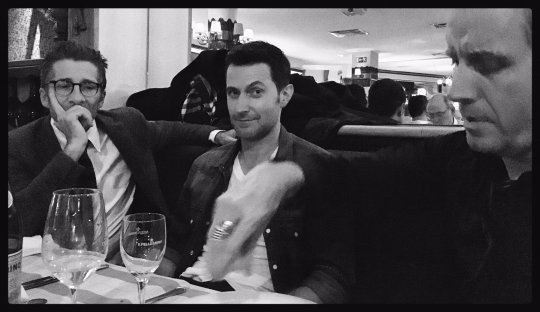
Five years ago, Michelle Forbes shared a photo having dinner with Richard, Rhys Ifans and Leland Orser over dinner.
#richard armitage#michelle forbes#valerie edwards#rhys ifans#hector dejean#leland orser#robert kirsch#berlin station#epix#dinner#photo#five years ago today#december 16 2016#daniel miller
60 notes
·
View notes
Photo

February 5th is...
Chocolate Fondue Day - The invention of Chocolate Fondue can be credited to a Swiss restaurant owner in 1960s New York City. And that person was Konrad Egli, who was motivated to add a dessert version of the dish to his restaurant menu at Chalet Suisse in New York. Egli’s inaugural version of the dessert included creamy chocolate (of the Swiss Toblerone variety) as well as a German version of cherry brandy (kirsch). While many Swiss people thought Egli was crazy to try to create a dessert version of their favorite cheesy dish, he didn’t care. And the result was something amazing that has lived on for more than 50 years now.
Ice Cream For Breakfast Day - Whether the sun rises over a frosty morning or a warm one, having a scoop or two of ice cream for breakfast once a year places a bright spot right in the middle of winter. The creamy goodness of chocolate or vanilla will start Saturday off right. Add some fresh fruit or sprinkle some of your favorite cereal for some crunch.
Lace Day - Italians say lace was created there by a Milanese family by the name of Sforza. The Flemish claim is founded on a painting from 1485 where a priest can be seen wearing an alb with what appears to be lace on it. What is far more likely is that it was developed in multiple locations and times throughout the world, but what is actually known is that it was widely known and produced in the 16th century. Lace has been used for everything you can imagine, not just underthings but also for decorating the home. Such was the delicacy and complexity of lace that it could be turned to almost any purpose, lace doilies were commonly placed on tabletops and on the back of couches, and was incorporated into clothing, especially dresses. During the 1800’s lace was ubiquitous as a sign of prosperity, and people took great care to keep their lace in good condition, particularly difficult since it would often be part of daily wear.
Play Outside Day - If it’s the first Saturday of the month, it’s National Play Outside Day. So, no matter what month it is, everyone put down their electronic devices and get outside!
Shower With A Friend Day - A tongue-in-cheek way of educating people about the benefits of filtered, chlorine-free water.
Weatherperson’s Day - Honors all individuals working in meteorology, weather forecasting, and broadcast meteorology. The day also recognizes volunteer storm spotters, observers, and others who work in the weather field. This annual holiday commemorates the birthday of John Jeffries, born on this day in 1744. Dr. Jeffries, a scientist and a surgeon, is considered one of America’s first weather observers. He kept weather records from 1774 to 1816.
Western Monarch Day - It is a day to celebrate the Western Monarch butterfly. It travels from place to place but this day specifically we give thanks for their return to the central California coast. Why is this so important? It is important to watch and make sure that they do return. The monarch butterfly is facing a terrific decline in numbers. Many conservation groups are calling for it to be protected as an endangered species and claim that the number of declines could be as high as 90%!
World Nutella Day - It is often said that necessity is the mother of invention. Adding hazelnuts when cocoa is hard to come by may have been an Italian trick during hard times. In the 1800s, in the northern Italian city of Piedmont, they made a paste of chocolate and hazelnuts at a time when the nuts were abundant, but the cocoa was not. At the end of World War II, cocoa was once again difficult to come by. Pastry Maker, Pietro Ferrero, made loaves of this sweet paste and called it Giandujot. Soon after, the Ferrero Company was founded on May 14, 1946. It wasn’t until 1951 that Ferrero made the paste into a spreadable form. We wouldn’t even recognize the spread by name until 1964 when Ferrero’s son Michele gave the jar of creamy hazelnut and cocoa the name Nutella.
World Pisco Sour Day - Celebrates Peru’s National Drink, the Pisco Sour. Pisco is a white brandy made in Peru from Muscat grapes. This brandy is the base liquor for the Pisco Sour. Other ingredients used to create a Pisco Sour include lime juice, egg whites, and Angostura bitters. An American bartender named Victor Vaughen Morris receives credit for inventing the alcoholic beverage. He developed the frothy, smooth cocktail in 1916 while working in Peru. Morris’ Bar was a favorite among the Peruvian upper class and visitors to Lima.
#chocolate fondue#ice cream#lace#play outside#chlorine#weatherperson#monarch butterfly#nutella#pisco sour
10 notes
·
View notes
Photo
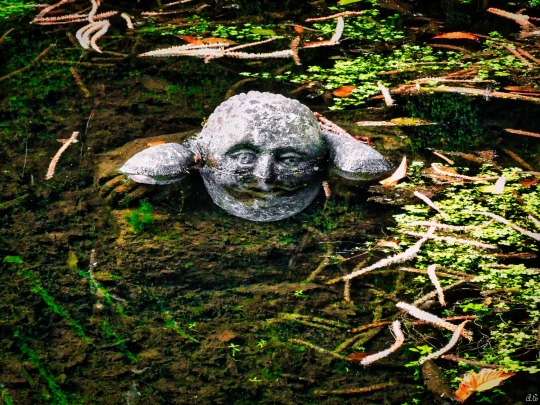
Dans le village abandonné de Clédat, les sculptures en pierre de Michel Kirsch invitent le visiteur à une passionnante déambulation tour à tour insolite, mystérieuse, charmeuse et captivante. Dominant la vallée de la Corrèze naissante à presque 800 mètres d'altitude, Clédat et ses quelques chaumières, chapelle et maisons ruinées sont éparpillées au milieu de blocs rocheux comme surgis de terre, quelque part au milieu de nulle part et hors du temps pour toujours. En 1901, Clédat compte encore 37 habitants mais son isolement et l'éloignement des voies de communication le condamnent inexorablement. Las, sans électricité, eau courante et téléphone, les derniers habitants l'abandonnent en 1963. Le village est aujourd'hui entretenu par une association de bénévoles qui en a fait un pôle touristique et culturel qui se visite gratuitement toute l'année. Outre les dizaines de sculptures éparpillées ici et là rendant le lieu absolument charmant, des panneaux explicatifs racontent l'histoire du village, et une exposition de vieux outils de labour est visible dans les ruines d'une ancienne grange. Mais il n'y a pas que ça ! Ne repartez pas sans voir la bonne fontaine Ste-Magdeleine, retrouvée à l'aide d'un radiesthésiste, la sape des Maquisards, sorte de planque contre l'ennemi, le tumulus Gaulois, les beaux étangs ou le superbe panorama du Rocher sur la vallée de la Corrèze, avec son énorme veine granitique. Bref, c'est un lieu enchanteur et une superbe découverte. N'hésitez pas à vous y rendre si vous passez par là.
7 notes
·
View notes


